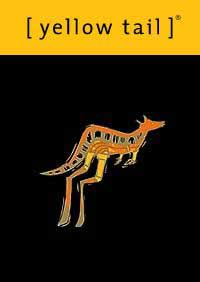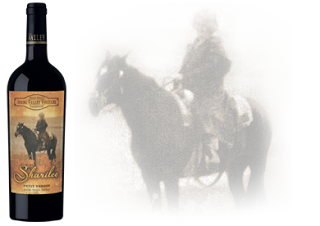Whenever I am asked if I would like to visit the winery ranch of Spring Valley Vineyard in Walla Walla, I am there! One doesn't have to ask me twice, as I always enjoy the opportunity to visit with Shari, Dean, Kate and of course, Serge.

It's a relaxing country drive, nine miles north from the city. Once on Corkrum Road, the views are of wheat and vines. The land of Spring Valley is rich in history and agriculture, dating back to the mid-1800's. Dean and Shari Corkrum Derby always greet you like old friends. Their property is lovely and with the spirit of past generations that are commemorated on their wine labels - - and just recently commemorated on markers in their memory garden.
Our visit was in the late afternoon during their busy crush. Serge LaVille, winemaker, teased us to be back the next morning, 8:00 sharp to pick the oncoming merlot. We dined on the beautiful green grounds under a tent surrounded by colorful baskets of flowers. Views of rolling hills of previously harvested wheat and now grape vines waiting their turn to be picked. Oh - - and let me tell you about the wines.
Through the years on my blog I have focused on the following estate wines from Spring Valley: Frederick (my go-to fave), Uriah, Derby, and Muleskinner - - all Bordeaux-style varietals and named for the men of Spring Valley.
However, if you read the history of the vineyard, you will discover that the women of Spring Valley played an important role in the family's history and continues to this day. I was thrilled to taste these exceptional wines.
The Women of Spring Valley Vineyard:
Nina Lee: This 100% Syrah is named for the wife of Frederick Corkrum. After
their meeting, following her vaudeville performance at a local theater, they
married in 1929. Frederick was Shari Corkrum Derby's father. After Frederick's passing, Nina Lee continued to manage the ranch on her own. This has to be one of the most sought after and most stunning wine labels around the northwest.
The 2009 vintage of Nina Lee is sassy like her photo. It was a late bud break, but the summer heat helped it along. Therefore, bringing an early harvest in September and finished early in October just before a big frost.
Every vintage of Nina Lee has always been bold and intense, and the 2009 is no different with its bright acids. Sweet violets and concentrated flavors of blueberries, blackberries, a hint of smoke, and dark rich cocoa. The tannins show off a bit, therefore making this deep and elegant wine one to place in the cellar for a couple of years - - or not, letting you enjoy it now and especially with food.
Kathryn Corkrum: A Cabernet Franc named in honor of Uriah Corkrum’s wife Katherine,
a native of Wales who immigrated to Walla Walla Territory in 1897. She
and Uriah had four sons, including Frederick.
The 2010 vintage was marked by a mild spring, cool summer and followed into a late summer harvest which allowed the grapes extra hang time on the vines. Violets! Roses! Alfalfa! A sip of this dark lush wine brings to the palate dark brambleberries, dark cocoa and a hint of herbs in the finish.
Sharilee: Welcome to the inaugural vintage of Petit Verdot named for Sharilee (Shari) Corkrum
Derby, granddaughter of Spring Valley founder Uriah (Kathryn) Corkrum and daughter of Frederick and Nina Lee Corkrum.
Again, the 2010 vintage had a late summer harvest allowing for extra hang time on the vines. I was absolutely elated to hear that Spring Valley finally released a Petit Verdot!
Six years ago, I dined with Serge and his family at his home. Towards the end of the evening, Serge brought out a special treat - - a 375 ml bottle of Petit Verdot sourced from the fruit of Spring Valley. I honestly cannot remember now if it was an experiment or a special release for their wine club, but what I do remember - it was a big bold wine and the tannins just about took the enamel off of my teeth.
Typically Petit Verdot is added in small amounts for just a touch of tannins and rich flavors in Bordeaux blends. It is often a "generous" grape and from the first sip of this new 2010 release, Serge had tamed this wine into an elegant offering. Once again those notes of violet perfume came through and even a hint of leather. On the palate it was rich with notes of dark Bing cherry, fig preserves, cloves, nutmeg and with just a hint of mineral in the finish. This new release of Sharilee Petit Verdot was one of the highlights of the evening.

In 1993, Shari and her husband, Dean Derby planted the first vines on
the land of Spring Valley. Today, Shari and Dean continue to farm
wheat as Uriah, Frederick and Nina Lee did in years past on these
rolling hills of Spring Valley.
 Cave B Estate Winery Cabernet Franc 2009: I decided to throw in a ringer. Cave B Estate is a boutique winery located in the Columbia Valley wine region in the center of Washington State Wine Country, within 900 feet above the Columbia River.
Cave B Estate Winery Cabernet Franc 2009: I decided to throw in a ringer. Cave B Estate is a boutique winery located in the Columbia Valley wine region in the center of Washington State Wine Country, within 900 feet above the Columbia River. 













